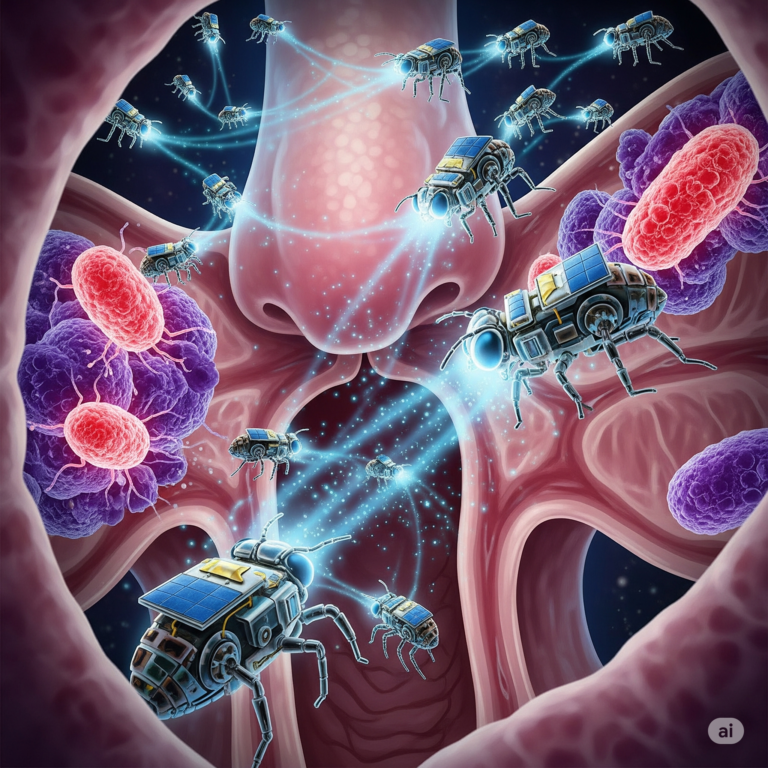The medical world is constantly evolving, with new technologies emerging to improve diagnostics, treatment, and drug delivery. One such breakthrough is the use of radioactive gold nanoparticles (AuNPs) to track drug distribution within the human body. This innovation offers an advanced method for monitoring how medications spread, ensuring better treatment outcomes, and reducing side effects.
Gold has been valued for centuries, not just for its beauty but also for its medicinal properties. Now, scientists are leveraging its unique characteristics to enhance modern medicine. By making gold nanoparticles radioactive, researchers can trace drugs with unprecedented accuracy, providing critical insights for personalized medicine and targeted therapies.
In this article, we explore how radioactive gold nanoparticles work, their advantages, potential applications, and the future impact of this groundbreaking technology on healthcare.
What Are Radioactive Gold Nanoparticles?
Nanoparticles are tiny particles, often measured in billionths of a meter, that can interact with biological systems at the molecular level. Gold nanoparticles, in particular, are widely studied due to their biocompatibility, stability, and ability to attach to various molecules, including drugs.
When made radioactive, gold nanoparticles emit detectable radiation, allowing scientists to track their movement within the body. This enables real-time imaging and precise monitoring of drug distribution. Researchers use isotopes such as gold-198 (198Au) to make the nanoparticles radioactive, as it emits gamma rays and beta particles suitable for medical imaging.
How Do Radioactive Gold Nanoparticles Work?
The process of using radioactive gold nanoparticles for drug tracking involves several key steps:
- Synthesis and Functionalization:
- Gold nanoparticles are first created using chemical or biological methods.
- They are then functionalized—coated with molecules that allow them to attach to specific drugs or biological targets.
- Radioactive Labeling:
- The nanoparticles are made radioactive by incorporating gold isotopes.
- Gold-198 is commonly used because it has a short half-life, making it effective for medical applications without prolonged radiation exposure.
- Drug Conjugation and Administration:
- The radioactive nanoparticles are attached to drugs and administered to patients through injections, oral delivery, or other means.
- Tracking and Imaging:
- Specialized imaging techniques such as positron emission tomography (PET), single-photon emission computed tomography (SPECT), or gamma cameras detect the radiation emitted by the gold nanoparticles.
- This allows scientists to see where and how the drug is distributed in real time.
Advantages of Using Radioactive Gold Nanoparticles for Drug Tracking
This technology offers several major benefits over traditional drug tracking methods:
1. Real-Time Drug Monitoring
With radioactive gold nanoparticles, doctors and researchers can observe drug movement and absorption in real time. This provides immediate feedback on drug effectiveness and helps fine-tune dosages for better therapeutic outcomes.
2. Improved Drug Targeting and Precision Medicine
By attaching radioactive gold nanoparticles to specific drugs, scientists can ensure that medications reach their intended target, reducing unnecessary exposure to healthy tissues. This is especially crucial for treating cancers and other diseases requiring precise drug delivery.
3. Reduced Side Effects and Enhanced Safety
Many drugs cause unintended side effects due to improper distribution in the body. With radioactive tracking, doctors can adjust treatment plans to minimize harm and improve patient safety.
4. Accelerated Drug Development
Pharmaceutical companies spend years testing how drugs behave in the human body. Radioactive gold nanoparticles provide a faster and more accurate way to study drug metabolism, expediting the development of new medications.
5. Non-Invasive and Highly Sensitive Imaging
Traditional drug tracking often requires biopsies or repeated blood tests. Radioactive gold nanoparticles allow for non-invasive imaging, making the process less stressful and more comfortable for patients.
Potential Applications of Radioactive Gold Nanoparticles
The use of radioactive gold nanoparticles extends to multiple fields of medicine and drug research:
1. Cancer Treatment and Chemotherapy Monitoring
Gold nanoparticles can be attached to chemotherapy drugs to track their movement, ensuring that they reach cancer cells while sparing healthy tissues. This could revolutionize personalized cancer treatment, improving outcomes and reducing harmful side effects.
2. Neurological Disorders and Brain Drug Delivery
The blood-brain barrier makes it difficult for many drugs to reach the brain. Using radioactive gold nanoparticles, scientists can observe how medications move across this barrier, leading to better treatments for Alzheimer’s, Parkinson’s, and brain tumors.
3. Cardiovascular Disease Drug Tracking
Heart medications often need precise delivery to arteries and veins. By tracking drugs using radioactive nanoparticles, researchers can develop better treatments for atherosclerosis, blood clots, and heart disease.
4. Infectious Disease Treatment
Tracking antibiotics and antiviral drugs in real time could help optimize treatment for infections, including drug-resistant bacterial infections and emerging viral diseases.
5. Organ Transplantation and Autoimmune Disease Research
Understanding how immunosuppressant drugs distribute in transplant patients can improve graft survival rates and reduce rejection risks. Similarly, tracking medications for autoimmune diseases like rheumatoid arthritis and lupus can lead to better treatments.
Challenges and Ethical Considerations
While radioactive gold nanoparticles offer numerous benefits, there are some challenges to consider:
1. Radiation Safety
Although gold-198 has a short half-life, its radiation emissions need careful monitoring to ensure patient safety. Researchers are working on optimizing dosages to minimize any potential risks.
2. Cost and Accessibility
Developing and producing radioactive nanoparticles is expensive. Wider adoption will depend on making the technology more cost-effective for hospitals and research institutions.
3. Regulatory Approval and Clinical Trials
Before widespread medical use, radioactive gold nanoparticles must undergo rigorous testing and FDA (Food and Drug Administration) or EMA (European Medicines Agency) approval to ensure safety and effectiveness.
4. Ethical Concerns in Human Testing
Using radioactive materials in medicine always requires ethical considerations, including informed consent, safety protocols, and long-term health monitoring.
The Future of Radioactive Gold Nanoparticles in Medicine
The future looks promising for this innovative technology. As research advances, we can expect:
- More precise and safer drug delivery methods
- Expanded applications in personalized medicine
- Better diagnostic tools for complex diseases
- Potential breakthroughs in nanomedicine and targeted therapies
With continued scientific progress, radioactive gold nanoparticles could become an integral part of modern medicine, improving patient care and revolutionizing how we understand drug interactions in the body.
Conclusion
The use of radioactive gold nanoparticles represents a major leap forward in drug tracking and personalized medicine. By providing real-time imaging, enhanced precision, and reduced side effects, this technology has the potential to transform healthcare as we know it.
As scientists continue to refine the approach and overcome challenges, the future of drug delivery and disease treatment will be safer, more effective, and more tailored to individual patients. The fusion of nanotechnology, nuclear medicine, and AI-driven data analysis will further enhance this field, leading to groundbreaking discoveries that could redefine modern medicine.
The golden era of nanomedicine is just beginning, and with it comes the promise of a healthier, more targeted approach to treating disease.









+ There are no comments
Add yours